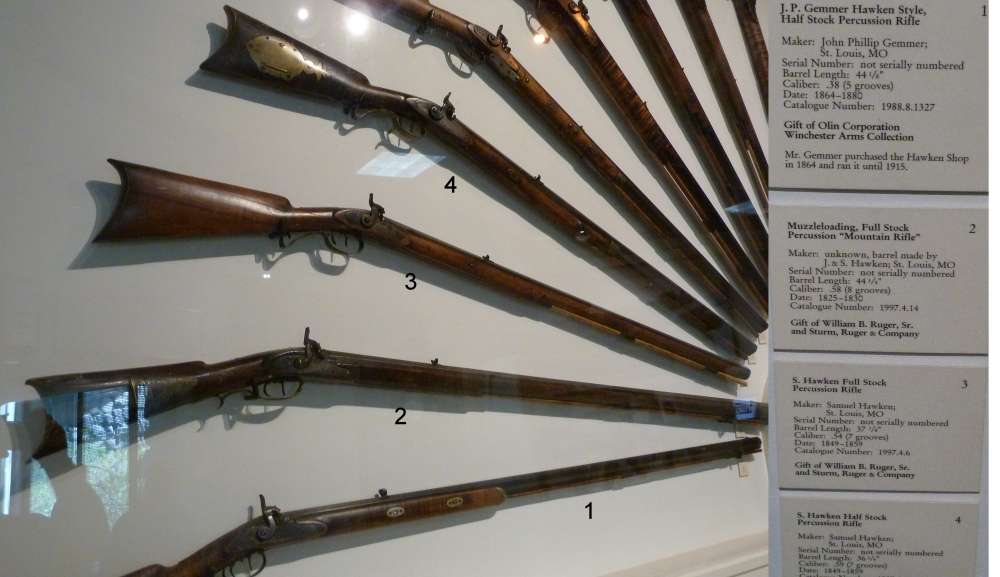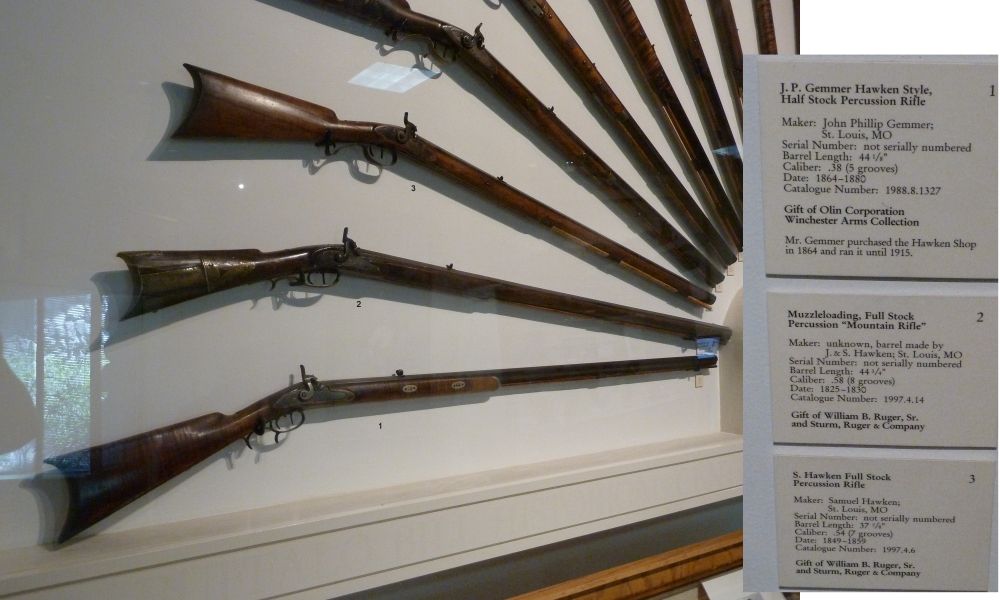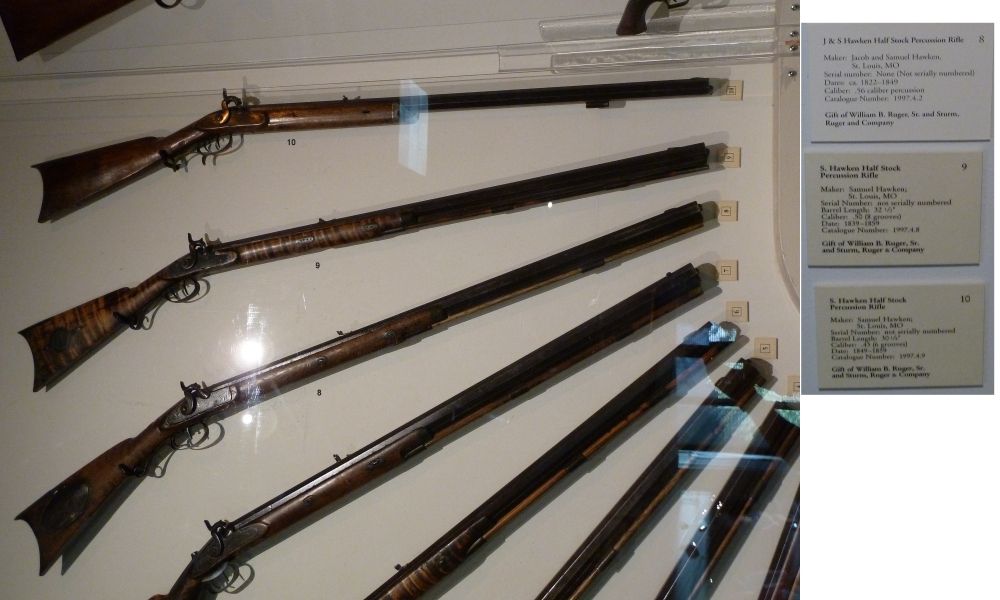galamb
58 Cal.
The above is mostly true of later rifles, which are the ones that have predominantly survived.
Prior to 1840 Walnut was readily available and cheap. After 1840 (at least in St. Louis) Maple was widely available and cheap.
I have specs on 12 J&S Hawken marked rifles - 6 of which are stocked in Walnut.
In contrast only 2 of the 38 S. Hawken marked rifles that I have specs on were made from Walnut and only 1 was noted to have "curly maple".
So IF you were trying to historically recreate a full stocked Hawken which might of have been originally built in flint it would most probably be:
A J&S style
have a Tennessee vice a beaver tail cheek piece
would have the early trigger guard (reminiscent of an English Fowler and not the flat grip that TOTW calls early)
would have a barrel somewhat greater than 36" with 38" being (typical) of a J&S rifle
would probably be stocked in Walnut
and if it was in fact an original flint, would probably have an English lock such as an Ashmore or a Ketland.
(however, their father, who taught both the boys rifle building was not "brand loyal" when it came to locks and he used "anything that was available" - if this was passed along, at least initially to his sons, it would not have been "out of character" to slap a Germanic lock on one of their rifles - but most Hawken followers would not support that theory and might tell you that you would never see a Germanic lock on Hawken flint, if one ever existed)
This is a rifle built by Jake and Sam's father about 1821. So I don't see it as a huge "stretch" that a Germanic flint lock would show up on a rifle either one of them built a mere 5 years later in St. Louis...

Prior to 1840 Walnut was readily available and cheap. After 1840 (at least in St. Louis) Maple was widely available and cheap.
I have specs on 12 J&S Hawken marked rifles - 6 of which are stocked in Walnut.
In contrast only 2 of the 38 S. Hawken marked rifles that I have specs on were made from Walnut and only 1 was noted to have "curly maple".
So IF you were trying to historically recreate a full stocked Hawken which might of have been originally built in flint it would most probably be:
A J&S style
have a Tennessee vice a beaver tail cheek piece
would have the early trigger guard (reminiscent of an English Fowler and not the flat grip that TOTW calls early)
would have a barrel somewhat greater than 36" with 38" being (typical) of a J&S rifle
would probably be stocked in Walnut
and if it was in fact an original flint, would probably have an English lock such as an Ashmore or a Ketland.
(however, their father, who taught both the boys rifle building was not "brand loyal" when it came to locks and he used "anything that was available" - if this was passed along, at least initially to his sons, it would not have been "out of character" to slap a Germanic lock on one of their rifles - but most Hawken followers would not support that theory and might tell you that you would never see a Germanic lock on Hawken flint, if one ever existed)
This is a rifle built by Jake and Sam's father about 1821. So I don't see it as a huge "stretch" that a Germanic flint lock would show up on a rifle either one of them built a mere 5 years later in St. Louis...




























